If you’re looking for the perfect plywood for your next project, you might be wondering, “What is luan wood?”
We have the answer to that and more in the guide below. Read on to learn all you need to know.
What Is Luan Wood?
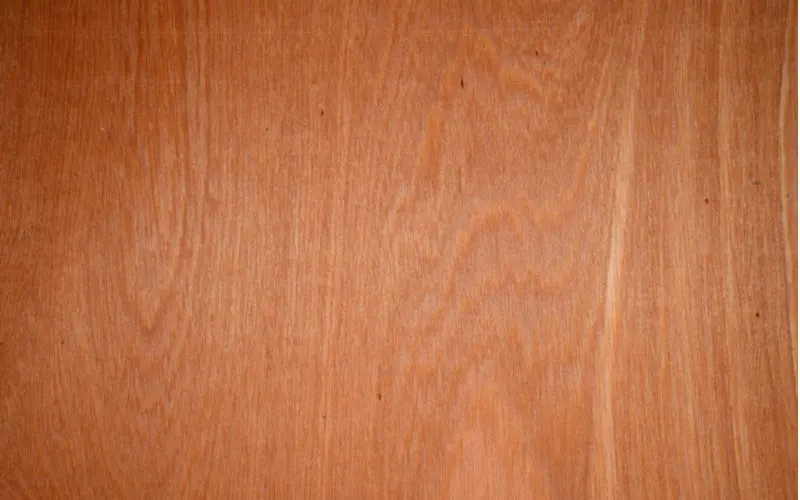
Tony Savino/Shutterstock
Luan is a hardwood plywood with many uses and a few different looks.
Sometimes spelled lauan, sometimes called meranti, and other times referred to as Philippine mahogany, this plywood comes from any number of the 196 species of Shorea trees found in the Philippines and New Guinea.
Despite its designation as a hardwood, it’s relatively malleable. Luan typically comes in thin pieces, so it’s not ideal as a weight-bearing material.
Available in shades of red and white, luan’s appearance varies due to where the trees grow. We usually find luan used for:
- Floor underlayment
- Veneers
- Cabinetry
- Construction on boats
- Toys like dollhouses
- Hobby projects
Best Uses for Luan Wood
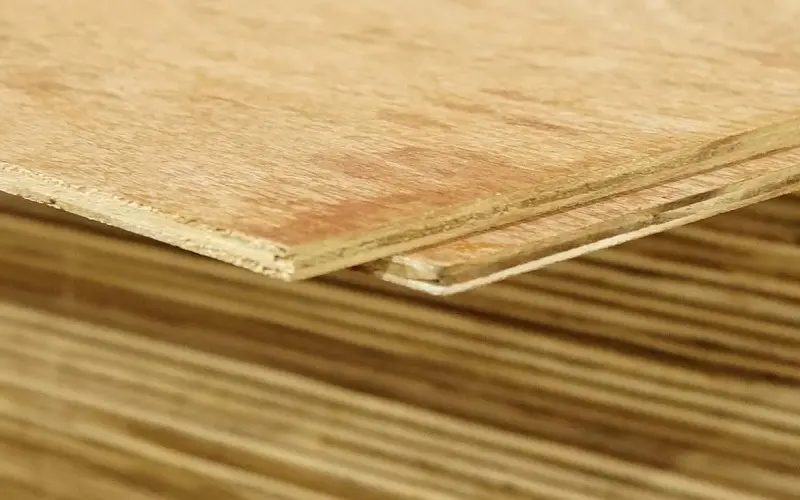
Image/homeguides.sfgate.com
As with just about anything in construction and building projects, your project determines the suitability of materials. Luan has its ups and downs, so review all its characteristics to see if it’s a good fit for your project.
Pros
- Beautiful wood for exposed areas (some people love the knots and blemishes)
- Water-resistant
- Strong, sturdy, and relatively durable, especially related to its thinness
Cons
- Luan sheets can have many knots and blemishes
- Too thin to support significant weight
- Relatively poor packaging for luan’s long overseas journey often results in damaged pieces
While it works when used as floor underlayment (and it often is, as it’s lighter and less expensive than traditional plywood), it’s not a material you’d want to use on a wall. It’s not a good replacement for sheetrock.
That said, some people use luan as a wall treatment. For instance, instead of paneling or wallpaper, some people paint patterns on luan when applying it as a wall covering.
Luan has a flame-spread rating of 167, which makes it a Class III flame-spread material. In other words, the wood can’t qualify as flame-retardant, so you may want to consider that when weighing some construction uses.
The chart from the University of Washington states that 3/4-inch plywood offers an R-value less than one. As such, the significantly thinner luan will offer little insulation to any walls, floors, or ceilings it covers.
While there are some drawbacks to luan, it may work wonderfully for the projects below.
Flooring and Underlayment
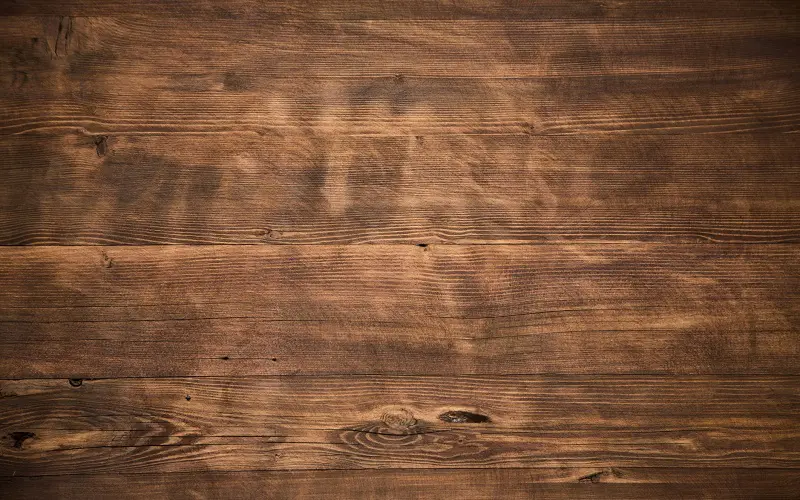
Image/homesteady.com
While we’ve mentioned luan as a subflooring option, people sometimes use it as actual flooring.
It’s often a substitute for a more permanent and expensive solution that will appear later. If painted or otherwise treated, luan can make a pretty floor.
If you want to use luan as temporary flooring, you’ll want to put down a foam insulation layer.
Of course, insulation helps regulate your home’s temperature. But with luan, the insulation also helps reduce the squeaking sound of the luan rubbing against the subflooring.
Keep in mind that installers staple luan flooring into place rather than glue it due to its temporary nature. Removing glued luan can prove to be very difficult.
Veneers
Because of its nice appearance with its red or white color and attractive grain patterns, many individuals choose luan as a veneer for furniture projects.
You might use it as the back panel for a home entertainment center or a bookshelf. It can create a much prettier finished product than masonite or CD plywood.
Cabinetry
People often use luan for doors and the sides of cabinets because of its attractive and lightweight qualities.
However, cabinetmakers avoid using it for spots that require structural support because of the sheets’ thin and pliable nature.
If you choose luan for cabinetry, take care when selecting a color or a finish. We’ll discuss this a little more below, but painting or staining luan often requires much prep and in-between work.
Boat Projects
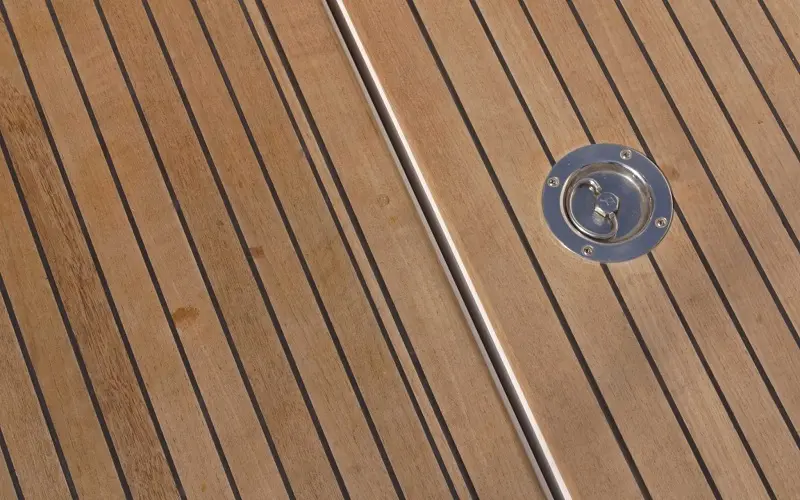
Image/weekand.com
Building small shelves or even some seating on a boat requires something relatively water-resistant.
Thankfully, many luan grades use waterproof glue between the wood layers. This process makes exterior-grade luan ideal for any water-based projects.
Additionally, this water resistance provides another reason for people to prefer luan as subflooring.
If you—or your kids—often spill food or drinks on the floor, those accidents won’t harm the luan flooring.
Toys and Hobby Projects
Luan plywood is popular among many hobbyists, especially those that enjoy building dollhouses.
Many dollhouse kits come prepackaged with luan wood parts for building walls, floors, and ceilings.
People who build dollhouses from plans or their imaginations often use this plywood, too.
Although light, the wood stands up to a little wear and tear. It also proves to be a stable wood, so you won’t have much to worry about in terms of swelling or warping.
Other hobby projects using the Filipino plywood product depend on the same qualities: light, pliable, and easily manipulated.
Many people create decorative signs from luan. Its lightweight nature creates a finished product that easily and safely hangs on the wall. If you’re considering luan for carving projects, think again.
You won’t get far since luan rarely comes thicker than 1/4 inch. Its flexibility would make for easy carving, but the thin sheets don’t yield much in terms of carved results.
Frequently Asked Questions
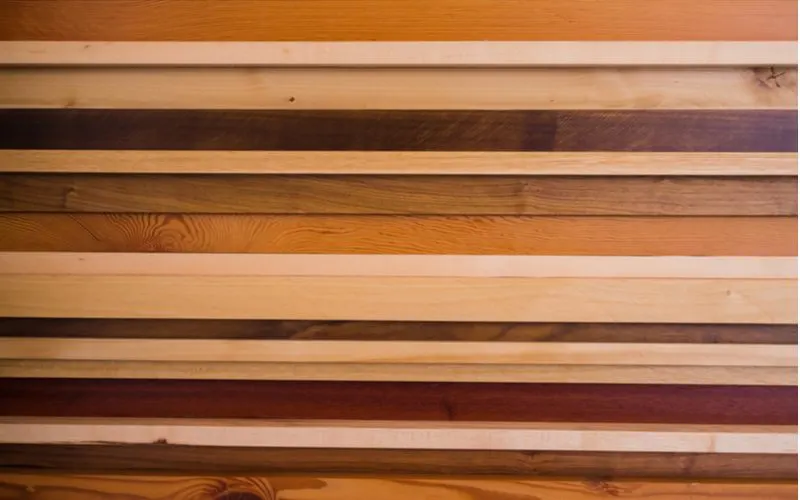
Alphonse Leong/Shutterstock
Even with all that information, you might still have questions. So let’s address any lingering misgivings you might have before you make your final decision on what wood to get for your next project.
Is Luan the Same as Mahogany?
No. Though some refer to it as Philippine mahogany, it’s not mahogany. It comes from the Shorea genus of trees, which grow in Southeast Asian tropical areas.
Mahogany comes from two different genera (Swietenia, found mostly in the Americas, and Khaya, an African genus). Luean is a much softer wood than mahogany, so it isn’t a good substitute for it.
Is Luan the Same as Plywood?
Luan comes from the wood of Shorea trees. Plywood results from pressing and gluing together thin layers of wood – all kinds of wood, including luan.
So all sheets of luan are plywood, but not all sheets of plywood are luan.
How Do I Cut Luan?
The best way to cut a sheet of luan is with a circular saw. Normal ripping blades have fewer teeth than a crosscut saw blade.
Since fewer teeth mean more chances of splintering the wood, your best bet is a crosscut blade.
Also, cut the wood with the finished side face down. This will further lessen the chances of your luan splintering along the cut line.
Can I Paint Luan?
You certainly can. Most builders do not recommend it, though. You can stain luan if you wish, but you will need to do significant work to make it look nice.
Even when you paint it, you’ll need to use primer (at least a couple of coats) and make sure you sand between applications for a smooth finish.
Is Luan the Right Wood for Me?
So, what is luan wood? It’s versatile, thin, and malleable.
While luan may not be the perfect selection for every project, it just might be the perfect (and affordable and lightweight) choice for you.

